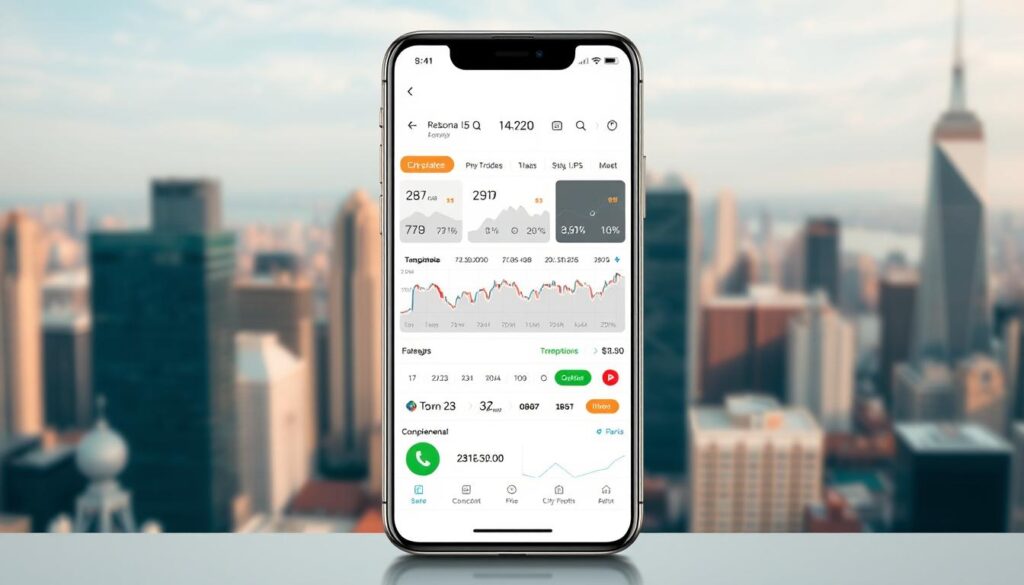Now Reading: Crypto Tax Reporting for Margin Calls: A Step-by-Step Guide
- 01
Crypto Tax Reporting for Margin Calls: A Step-by-Step Guide
Crypto Tax Reporting for Margin Calls: A Step-by-Step Guide

Crypto tax reporting for margin calls needs careful handling. Margin calls involve borrowing assets, leading to taxable events. Traders often miss these. Proper reporting keeps you compliant and avoids penalties.
This guide will help you report margin call taxes. You’ll learn about documentation and calculations. It covers tracking forced liquidations, interest payments, and voluntary closures to meet IRS rules.
Key Takeaways
- Master crypto tax reporting for margin calls through clear steps.
- Identify taxable events like liquidations and interest payments.
- Understand required documentation for accurate reporting.
- Apply strategies to minimize tax liabilities and stay compliant.
- Leverage specialized software to streamline calculations.
Understanding Crypto Margin Trading and Its Tax Implications
Crypto margin trading lets traders use borrowed funds to grow their investments. This method comes with risks like margin calls. These risks are tied to margin call taxation rules. Knowing these basics helps traders follow cryptocurrency tax margin call rules.
What Is Margin Trading in Cryptocurrency?
Margin trading boosts investment power by using borrowed assets. It involves:
- Leverage ratios: 2x or 5x multipliers on deposited funds
- Margin accounts: Hold collateral like BTC or stablecoins
- Liquidation thresholds: Triggers when asset value drops below required levels
How Margin Calls Happen in Crypto Markets
Margin calls happen when market moves reduce collateral value. For example, a trader borrows ETH to buy BTC. If BTC price drops 20%, the account might hit a liquidation point. This forces immediate asset sales, creating taxable events tracked by the IRS.
The Basic Tax Principles That Apply to Margin Trading
When positions close, tax rules kick in. Realized gains/losses are based on entry and exit prices. Interest on borrowed funds might be deductible under IRS rules. Ignoring these risks non-compliance in margin call taxation scenarios.
The IRS Stance on Cryptocurrency Margin Trading
The IRS views cryptocurrency as property, as stated in Notice 2014-21. This affects how taxes are applied to margin calls. When a margin call happens, traders must report it as a property transaction. They need to track the cost basis and any gains or losses from these events.
How much you pay in taxes depends on how long you held the cryptocurrency. If it’s less than a year, it’s taxed as short-term capital gains. If it’s more than a year, it’s taxed as long-term capital gains. The IRS sees each trade as a taxable event, even if it’s through a margin account. Also, interest on margin loans is not deductible, according to current margin call tax laws.
- Margins trades are taxed like property sales, with proceeds minus basis determining gains.
- IRS guidance remains limited, leaving cross-collateralized trades in “gray areas” for reporting.
- Traders must document all margin call crypto taxes event, including platform transactions, to avoid audits.
Recent IRS rulings stress the importance of transparency. Traders must report every margin call crypto taxes event, even if they lost money. Keeping up with tax code changes is crucial for compliance. For more on property valuation rules for crypto, check IRS Publication 544.
Identifying Taxable Events in Margin Call Scenarios
Trading crypto with margin means every action can lead to tax duties. It’s crucial to know these events for crypto margin call tax reporting. Missing a single taxable moment can attract IRS attention.

Forced Liquidations as Taxable Events
Exchanges liquidate positions when collateral drops below needed levels. These margin call tax implications are seen as taxable sales, even if they’re forced. For instance, losing half of a Bitcoin position through liquidation is a taxable event at sale time.
It’s important to record the crypto sold, its price, and the date of sale.
Voluntary Position Closures to Avoid Margin Calls
- Closing positions early to dodge liquidation also triggers a taxable event.
- The profit or loss is determined by the sale proceeds minus the basis, even if it was a defensive move.
- It’s vital to document the intent to close the position, not just react to margin calls.
Interest Payments and Their Tax Treatment
Interest paid on borrowed funds in margin trading might be deductible in crypto margin call tax reporting. But, it depends on IRS rules for investment interest. Keep all interest charges records and talk to a tax expert to check if you qualify.
Crypto Tax Reporting for Margin Calls: The Complete Process
Understanding crypto tax reporting for margin calls is key. We’ll cover three main steps: getting your documents, figuring out cost basis, and checking gains or losses. Each step is crucial for following tax rules on margin calls.
Documentation You Need to Gather
First, collect all records from your margin trades. You’ll need:
- Trade confirmations from exchanges (e.g., Binance, Kraken)
- Margin call notices from platforms
- Loan agreements with interest rates and repayment terms
- Account statements for the margin event period
For more on IRS rules, check out tax implications guides.
Calculating Your Cost Basis After a Margin Call
Keep track of when and how much you bought each asset. Use FIFO or LIFO for partial sales:
- Find out which coins were sold or used to pay off loans.
- Update your cost basis by averaging purchase prices.
Getting this wrong can lead to audits. So, stick to one method for tracking.
Determining Capital Gains or Losses
To find net gains or losses, subtract total earnings from adjusted cost basis. If you sold within a year, it’s short-term capital gain taxed at a higher rate. Losses can offset income, following IRS rules.
Note: Keep detailed records to avoid penalties for underreporting.
How to Report Margin Call Losses on Your Tax Return
When you report margin call losses, you need to use IRS forms like Schedule D and Form 8949 carefully. First, sort your losses into short-term or long-term on Form 8949. List each crypto trade’s buy and sell dates, proceeds, and cost basis. Then, add up the totals on Schedule D, marking losses under “Capital Gains and Losses.”
- Keep track of every margin call event, noting the dates and amounts. Also, record any liquidations or voluntary closures.
- Figure out your net losses by subtracting the total cost of crypto sales from the proceeds. If you have a negative number, you can deduct the loss.
Remember, wash sale rules are in effect: you can’t buy the same crypto within 30 days of selling it to get a deduction. Also, interest paid on margin loans isn’t tax-deductible. If you use mark-to-market accounting, report any gains or losses each year to make margin call taxation easier.
Some states might need you to file separate tax returns. Check the IRS Publication 544 for rules on valuing assets. Keep detailed records of your trades, including exchange statements, to back up your claims if audited.
Common Margin Call Tax Scenarios and Their Solutions
Handling margin call crypto taxes can be tricky. This part covers three common problems and offers easy fixes. We aim to keep things simple and ensure you follow the rules.
Cross-Collateralization Tax Implications
Using different crypto assets as collateral can lead to tax issues. For example, moving ETH to back a BTC loan might mean you have to track gains or losses for both. To solve this, keep a record of all changes on platforms like Gemini or BlockFi. Tools like CoinTracking can help track these changes and figure out your cryptocurrency tax margin call costs.
Multiple Margin Calls Within a Tax Year
Dealing with multiple margin calls in one year can be a mess. Let’s say you have three margin calls in a year. Each one needs its own tax calculation. To fix this, use tools like Taxbit to combine all your liquidation data into one Form 8949. This makes filing easier and keeps you in line with the IRS.
Handling Margin Calls Across Different Exchanges
Traders on Binance, Kraken, and other platforms face a big challenge. They have to deal with different data formats, making tracking hard. To solve this, use Koinly or CoinMarketCap Tax to bring all your transactions together. These tools help merge your data into one place.
Tax-Loss Harvesting Strategies Following Crypto Margin Calls
Tax-loss harvesting helps offset gains after margin calls. It’s key to balance strategic loss realization with crypto margin call tax reporting rules. This balance is crucial to avoid penalties.
When to Consider Tax-Loss Harvesting
Act when market conditions lead to unrealized losses after margin calls. Key triggers include:
- Forced sales below purchase price due to margin calls
- Year-end portfolio rebalancing to capture deductible losses
- Unrealized losses exceeding 20% of an asset’s value
Documentation Requirements for Tax-Loss Harvesting
Keep detailed records to prove intentional loss realization. You’ll need:
- Date and price of the loss transaction
- Transaction IDs for sold and repurchased assets
- Audit trails showing no similar asset repurchase within 30 days (IRS wash sale rule)
Strategies must avoid triggering the wash sale rule. Sell losing assets but wait 31 days before buying similar crypto. Use the money to invest in related but different assets, like ETFs. Always check IRS guidelines to stay up-to-date with margin call tax implications.
Special Considerations for Day Traders Facing Margin Calls
Day traders dealing with margin calls have to follow special margin call tax laws. The IRS looks at how often you trade, how much time you spend trading, and how much you make from it. Being classified as a trader can change how you report losses and interest expenses.
Important things to remember include:
- Mark-to-market election: Traders can deduct losses from margin calls each year with this method.
- Those making most of their income from trading must make quarterly tax payments.
- You need to keep records of all trades, including when you have to sell quickly, for tax forms.
Being a pattern day trader, as defined by FINRA, affects how you report taxes on margin calls. Brokers watch traders who trade a lot, so you need to keep accurate records. This ensures you follow IRS rules for tax reporting on margin calls.
Traders with margin loans also have to report interest expenses. This is important for Schedule C if you trade like a business. Not doing this right can lead to penalties or audits.
Tools and Software for Tracking Margin Call Tax Obligations
Managing margin call crypto taxes needs tools that can handle complex trades and liquidations. Specialized crypto tax software makes crypto tax reporting for margin calls easier. It automates data collection and calculations. Platforms like CoinTracker, Koinly, and TokenTax have features for margin trading.

- Automatic import of margin trade history
- Liquidation event recognition for taxable gains/losses
- Multi-exchange API compatibility
API integration is key for real-time data syncing. Connect exchanges like Binance or Kraken through APIs. This ensures tax software captures all transactions. But, issues like missed fee calculations or timing discrepancies need manual checks.
Always compare liquidation timestamps with platform records to avoid mistakes.
When automated systems fail, manual tracking is a backup. Spreadsheets can track each margin call event. They have columns for:
- Trade dates and IDs
- Coin quantities and prices
- Liquidation proceeds and fees
Verify all calculations, no matter the method. Tax software might misclassify trades or overlook fees. Regular audits of transaction logs help meet IRS standards.
Working With Tax Professionals Who Understand Crypto Margin Trading
Dealing with reporting margin call taxes needs special skills. Tax experts in crypto margin trading must know IRS rules and blockchain. Look for CPAs with crypto knowledge or members of the IRS Digital Asset Advisory Group.
- Ask candidates: “Have you filed margin call taxation cases for traders?”
- Verify they use crypto-specific software like CoinTracker or ZenLedger for accurate records.
- Confirm familiarity with Form 8949 and Schedule D for margin-related gains/losses.
Get ready by organizing your trade logs and margin call notices. Also, have platform transaction IDs and statements on borrowed funds and interest. This makes your consultation faster and cheaper.
Specialized help costs vary, but wrong tax reporting can lead to penalties. A good advisor can find deductions or exemptions, making their fee worth it. For instance, interest on margin loans might be tax-deductible if documented right.
Split tasks: let pros handle IRS stuff, and you give them the trade data. Regular meetings keep you on track with tax deadlines. Don’t pick generic accountants. Ask for their crypto tax work samples to check their skills.
Avoiding Common Mistakes in Margin Call Tax Reporting
Getting crypto margin call tax reporting right is crucial to avoid big mistakes. Many traders miss important details, causing errors in their filings. Here are three common mistakes to watch out for.
Overlooked Taxable Events
When you move assets from personal wallets to exchange margin accounts, it can trigger taxes. For example, moving crypto to fund a margin trade is considered a sale. This affects your cost basis and must be reported to the IRS.
Let’s say you move Bitcoin from your personal wallet to Binance for a margin trade. This move can be taxable, even if you don’t make a profit right away.
Incorrect Cost Basis Calculations
Many traders make mistakes in calculating cost basis. They might ignore fees or use old valuation methods. For instance, if a margin trade costs $200 in fees but doesn’t include them in cost basis, it can increase your gains and taxes.
Tools like Koinly or CoinTracker help by automatically adding fees to your calculations. This ensures you follow IRS Publication 544 correctly.
Timing Issues and Tax Year Considerations
Margin calls that happen right before the year ends can be tricky. A liquidation on December 31st at 11:59 PM must be reported in the current tax year, not the next. Getting this wrong can result in penalties.
Keep track of dates and settlement times in spreadsheets or tax tools. This helps you meet IRS Form 8949 deadlines accurately.
Recent Tax Law Changes Affecting Crypto Margin Trading
Recent changes in margin call tax laws have made it harder for crypto traders to report their activities. The 2021 Infrastructure Act added a crypto question to Form 1040. This means traders must now report margin-related transactions, changing how they document cryptocurrency tax margin call events. To avoid penalties, traders need to keep up with these changes.

- Form 1040 updates: The “Did you sell, exchange, or otherwise dispose of any cryptocurrency tax margin call assets?” question mandates transparency.
- IRS guidance: 2023 IRS notices clarify that forced liquidations from margin calls are taxable events requiring precise cost basis tracking.
- Proposed rules: The IRS’s proposed real-time reporting (CTR) rules could soon require instant reporting of margin-related trades, affecting how tax liabilities are calculated.
Global trends also shape U.S. tax laws. The EU’s MiCA framework and FATF’s travel rule push U.S. lawmakers to strengthen margin call tax laws. Traders must watch for new proposals like the Corporate Transparency Act amendments. These changes expand entity reporting requirements.
Compliance now means tracking all margin trades, including those across borders. Failing to do so can lead to misreporting gains or losses during margin events.
Staying Compliant While Minimizing Your Tax Burden From Margin Calls
Managing crypto tax reporting for margin calls is all about finding the right balance. The IRS keeps a close eye on these transactions. So, it’s crucial to track everything accurately, like forced sales and interest payments.
Using tools like dedicated crypto-tax software helps. It keeps you in line with the law and might even find ways to lower your taxes.
To cut down on margin call crypto taxes, aim for long-term asset holding. This can lead to lower capital gains rates. Also, check your positions every quarter to see if you can use tax-loss harvesting.
Keep detailed records of all transactions, including loans and fees. This helps avoid penalties. For more complex cases, like repeated margin calls, get help from tax experts who know digital assets.
Make a yearly tax calendar to stay on track. Include mid-year reviews, year-end loss harvesting, and audits before filing. Keep up with IRS updates and software changes to meet new rules. With these steps, you can lower your taxes legally and without trouble.
FAQ
What are the tax implications of margin calls in cryptocurrency trading?
Margin calls can trigger taxes, like when you’re forced to sell assets. You must report any gains or losses to the IRS. It’s important to understand how these taxes can affect your overall tax bill.
How do I calculate my cost basis after experiencing a margin call?
Figuring out your cost basis after a margin call can be tricky. You need to consider the original purchase price, any fees, and the assets left after the call. This helps you accurately report your gains or losses.
Are there specific IRS forms required for reporting margin call taxes?
Yes, you’ll need Schedule D and Form 8949 to report gains and losses from margin calls. Make sure to fill out these forms correctly, including any interest expenses.
What pitfalls should I avoid when reporting margin call tax obligations?
Don’t forget to report taxable events, calculate your cost basis correctly, and manage timing issues. These mistakes can increase your tax liability. Keeping detailed records and knowing tax laws is key.
How can I effectively document my activities for crypto margin call tax reporting?
Keep records of trade confirmations, margin call notices, and loan agreements. Also, have a detailed history of your transactions. These records are crucial for proving your tax reports and can help in case of an IRS audit.
What strategies can I implement for tax-loss harvesting after margin calls?
Tax-loss harvesting means using losses to offset gains. Look for losses in your portfolio after a margin call. Make sure to follow the wash sale rule for cryptocurrencies.
How are margin call tax laws evolving, and what should I keep an eye on?
Tax laws for crypto trading, including margin calls, are changing fast. The Infrastructure Investment and Jobs Act has raised reporting needs. Stay updated on IRS proposals that could change margin trading taxes.
Can I use crypto tax software to manage my margin call tax obligations?
Yes, crypto tax software can help with margin call reporting. It offers features like automatic data import and cost calculation tools. But, always check the accuracy of the software to ensure correct reporting.
What qualifications should I look for in a tax professional knowledgeable about crypto margin trading?
Choose a tax pro with crypto and margin trading experience. Look for certifications like CPA and a track record in crypto tax reporting. Asking about their experience will help you find the right person.

















